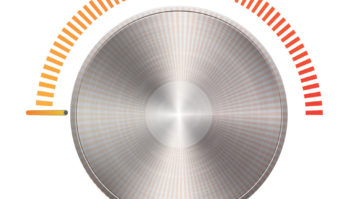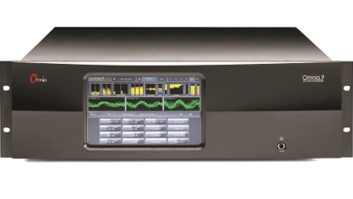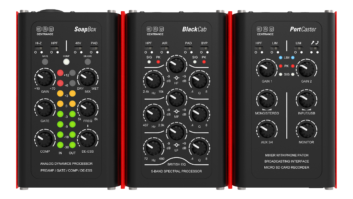Are you getting the most out of your radio station’s streaming setup? A Radio World ebook explores that question. Here’s an excerpt.
SOS Radio Network has seven transmitters and a dozen translators covering the Mountain West, including its flagship KSOS(FM), a 100 kW ERP station in Las Vegas on 90.5. The network, part of Faith Communications Corp., also has a dedicated mobile app and can be heard on TuneIn and other aggregators.
Dan Grimes is responsible for radio broadcast maintenance in the southwest region.
Radio World: What role does streaming play there, and what is the audio chain?
Dan Grimes: Our streaming is popular. We promote it and our app. Our mission is to share the gospel of Christ through music and teaching, so we want as many people as we can to listen. At any given moment, around 500 people are streaming live; they are primarily in North America, but we have listeners worldwide.
We’ve gotten over the minimum SoundExchange cap, so we have to pay per-listener, per-song, and keep track of those.

SOS Radio is listener-supported, we don’t have contracts with anyone. We want to be free of anyone telling us what we can and can’t put on air, so we raise money from our listeners through pledge drives.
When I came on five years ago, our playout server put out a stream to a distribution amp, where one feed went to the air processor and another went to a Symetrix box to keep streaming levels even. And we do two feeds so when a listener to the website has high bandwidth, they get MP3, but when they’re on their iPhone on cellular, it automatically switches over to the AAC and lower bit rates. At the time, a Barix encoder would do an MP3 stream while a DEVA Broadcast sent AAC+.
But then we got an Omnia.9 processor, which is licensed for three cores: FM+HD1, HD2 and HD3. We wanted our satellite network to get different processing so we use HD3 for distribution; we use the HD3 core for processing for the satellite network and for our streaming.
Our processing is very mild. We started with Omnia’s Reference preset, which was really nice. And the processor has embedded encoders, so now the .9 sends the streams to our CDN ChristianNetcast.com.
Our audio got much louder when we went to the processor. We do watch LUFS loudness levels. SOS Radio does well not because we have a lot of listeners but because they listen a long time, hours and hours and hours on end. With that in mind I don’t need to be the loudest. I want audio quality first, and then to be nice and consistent.
RW: How do you monitor?
Grimes: Well, first of all, our GM listens to it a lot! We do try to have ears on it as much as possible. And we use an Inovonics box. Their original version was the 610, which we have, but the new 611 is nicer. SSL or Secure Sockets Layer streams are now required for most streaming services, and it tends those. The 611 also has metering and graphing. And it can rotate among multiple streams, so we don’t need a monitor for every stream and bit rate. I set it on a 10-minute interval and it gives me alarms when one goes silent.
In fact I put the 610 on one ISP and the 611 on the other. If I get an alarm from one, I know it’s an ISP that’s the problem; if I get alarms from both I know that streaming is the problem. It’s kind of weird to monitor from different ISPs, but they do drop out a lot.
RW: You have redundant ISPs.
Grimes: We have over-redundancy! We had Cox hybrid fiber cable, but it would go down all the time, especially between 2 and 5 a.m.; I don’t know what people were doing on that line but it would just get hammered. Cox suggested an SD-WAN from their company RapidScale. Now we have a fiber circuit and a hybrid fiber circuit to coax cable, and for emergencies we have CradlePoint on Verizon.
The stream goes out to RapidScale, which determines the best link and then sends it over the internet. So we have redundancy going out. We’ve lost that hybrid fiber cable many times but the streaming has never gone down because of it, except once when a fiber was cut, back at the firewall.
What I don’t have is redundant audio out of the studio to our content distribution network. ChristianNetcast does not support multiple audio streams and splicing. I wish they did.
We contract with National Public Radio Distribution Services for our satellite distribution; for our feed to NPRDS we’re using GatesAir IP Links, which do have redundancy. I have two streams going out. One’s going over Cox, another over a Lumen Fiber. So not only do I have that SD-WAN, which has three different paths, but I also have Lumen Fiber. If all of Cox goes down, the Lumen Fiber picks up. For our satellite distribution, the IP Links have dual paths, and they do packet splicing to pick up whichever packets get lost.
But if we lose packets going to the CDN, our customers get dropout. And that does happen.

RW: Is latency an important consideration for you?
Grimes: I don’t think so. Our AAC is a lot more delayed but it doesn’t really “switch,” in my experience; instead it disconnects and reconnects. So when you’re going from high bandwidth to low bandwidth as a listener, there’s a big break.
Jitter would be more of a concern. As long as the latency is consistent, audio flows cleanly, but as soon as you have jitter — where latency is changing, from short to long latency — you’re going to have a dropout or a skip. And that does happen.
Our paths aren’t dedicated circuits, and they change once in a while. When they do, there could be enough change in latency to hear it. It’s usually once and short, not a big deal.
RW: Tips or things to avoid?
Grimes: Of course keep up your quality; get the best processing, the best level control.
The music that comes out of the music industry is very bad. Sometimes it’s highly distorted and you have to fix it. That’s one of the reasons we got that Omnia.9; it has a repair algorithm that restores peaks and dynamic range and removes distortion from source material. Square waves have an infinite number of sine waves to reconstruct, making accurate compression impossible; by removing the square waves from clipping, the compressed audio will be more accurate and sound much better.
Just remember that you don’t want lows that are thumpy or highs that scrape and scream in your ears; you can’t listen to it long-term.
And it has to be reliable. People may watch TV in the background for an hour; but with audio, people listen all day long, and they’re going to notice every little grit glitch and failure. Make sure your path to the CDN is super reliable.












